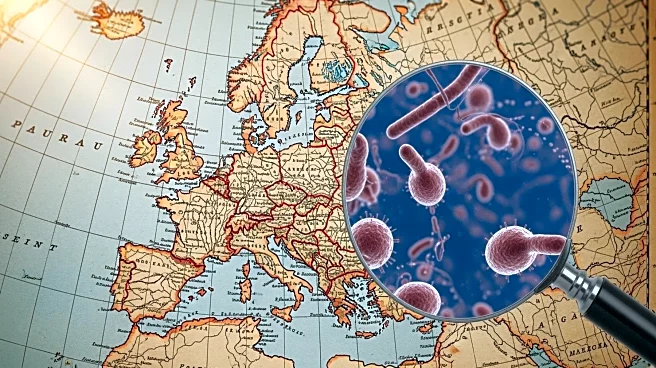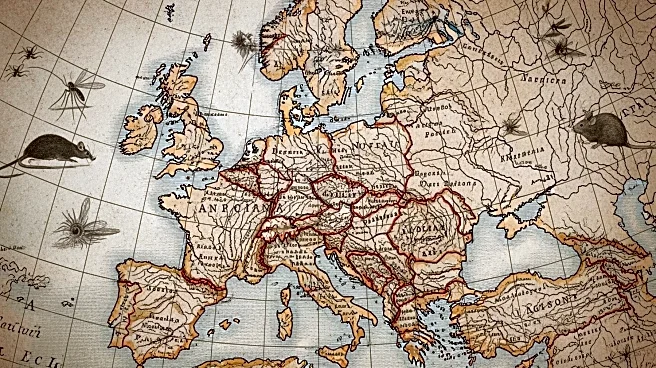What's Happening?
Researchers have identified two diseases that contributed to the devastation of Napoleon's Grande Armée during its retreat from Moscow in 1812. Using DNA analysis from the teeth of soldiers, the study found evidence of Salmonella enterica, responsible
for paratyphoid fever, and Borrelia recurrentis, causing relapsing fever. These findings challenge the long-held belief that typhus was the primary disease affecting the army. The study suggests that poor sanitary conditions and multiple infectious diseases weakened the soldiers, contributing to the high mortality rate during the retreat.
Why It's Important?
The study provides new insights into historical events, highlighting the significant impact of infectious diseases on military campaigns. Understanding the role of diseases in historical contexts can inform current public health strategies and military planning. The findings also underscore the importance of hygiene and disease prevention in large groups, which remains relevant for modern military operations and disaster response scenarios.
What's Next?
Further research may explore the broader implications of disease on historical military outcomes, potentially leading to revised historical narratives. The study could prompt historians and scientists to re-evaluate other historical events where disease played a critical role. Additionally, advancements in DNA analysis techniques may continue to uncover new information about past pandemics and their effects on human populations.
Beyond the Headlines
The study highlights the intersection of history and science, demonstrating how modern technology can reshape our understanding of the past. It raises questions about the resilience of human societies in the face of disease and the role of environmental factors in shaping historical events. This research may also contribute to discussions about the ethical use of genetic data in historical studies.













